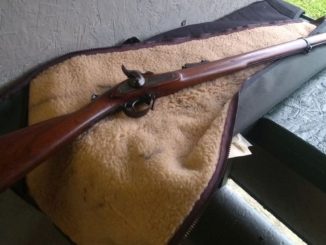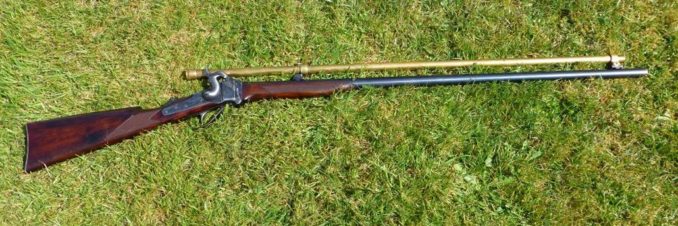
Introduction
One of my favourite scenes in one of my all-time favourite Westerns is when Josie Wales (played by Clint Eastwood) chased by Union Redlegs casually waits for them to reach mid-river on a hand-hauled ferry before carefully aiming his telescopically sighted Sharps rifle and with one shot parts the rope, stranding his pursuers in the fast flowing stream. If you haven’t seen it, here’s the clip. Missouri boat ride (from 2:50)
My rifle, although not an exact replica of the one used by Josie in the film (an 1865 Sharps Sniper rifle with a full length J. Stevens brass tube target scope) is, as near as makes no difference, the same. It came into my possession nearly 20 years ago when a shooting friend emigrated to Spain and gave it to me along with his replica 1860 Colt .44 revolver. The action is by Armi San Marco and was modified by a local gunsmith to receive a very heavy Parker-Hale Henry-rifled barrel chambered for 45-90 calibre. The telescopic sight is low powered (3 x magnification) and when fitted to the rifle it can only be adjusted for elevation. Once set up correctly, the scope makes the rifle very accurate but it does tend to work loose with the heavy recoil which is very frustrating. My only regret is that the action does not have double set triggers to lighten the release pull but beggars can’t be choosers.
The Sharps Rifle
Christian Sharps first began designing firearms in the 1840s establishing his own company C. Sharps & Company in Philadelphia in 1855. Early rifles were ‘transitional’ in that they used a paper cartridge containing lubricated bullet and powder charge. When the trigger guard was lowered this caused the action to drop thereby exposing the breech into which the slightly over long cartridge was inserted. When the trigger guard was raised the rising block acted like a guillotine cutting off the end of the cartridge to expose the powder to the flash from a percussion cap placed on a nipple and detonated by the falling hammer. These rifles gained a reputation for incredible accuracy and were used by Berdan’s Sharpshooters to devastating effect in the American Civil War. Their main problem lies in sealing the breech to prevent blowback of gases and unburnt particles of powder into the shooter’s face. Constant attention to cleaning was therefore necessary in use.
With the development of the self-contained metal cartridge these problems were immediately overcome and Sharps successfully modified the action by replacing the nipple with a linkage to a centrally placed firing pin that struck the primer in the base of the cartridge.

These 1874 rifles were strong, accurate and very reliable and they soon became the preferred weapon of buffalo hunters in a variety of powerful calibres including 45-70 Government; 45-90; 45-110 and 45-120. The numbers before the dash indicate the calibre i.e. .45 inch and the second group the amount of powder contained in the cartridge in grains. (7,000 grains = 1lb) Sharps also made very successful Creedmoor versions of his rifles fitted with precision aperture sights for use in competitions at 1,000 yards.
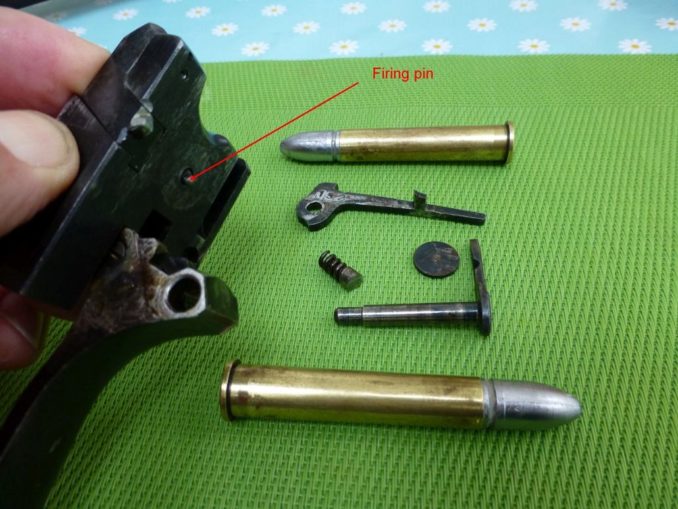
Reloading 45-90 Black Powder Ammunition for the Sharps Rifle
Loading cartridges for black powder rifles is much more complicated than when using modern nitro-based propellants and while my Sharps has been nitro-proofed, I prefer to do things the traditional way thereby making a rod for my own back as you will see.
Black powder is dirty stuff and brass cartridges used with it soon become tarnished and difficult to clean unlike those used with nitro powders.
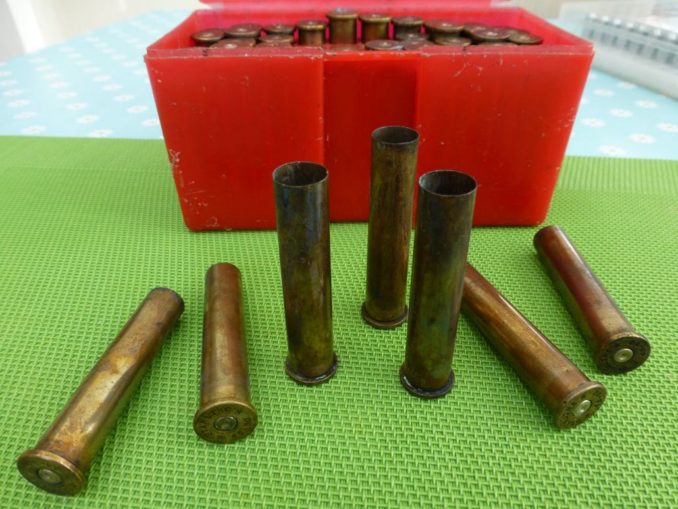
The worst of the tarnishing is removed by tumbling the cases in a vibrating bowl containing a mildly abrasive medium such as crushed walnut shells but acidic case-cleaning solutions are the only reliable way to return them to a shiny, unmarked finish.
Once cleaned, the first step is to re-size the case neck which will have expanded on firing and remove the used primer from the pocket in the cartridge base. This is done with a special die that has a hardened pin that presses out the old primers which are then caught in the trays fitted to the reloading press body.
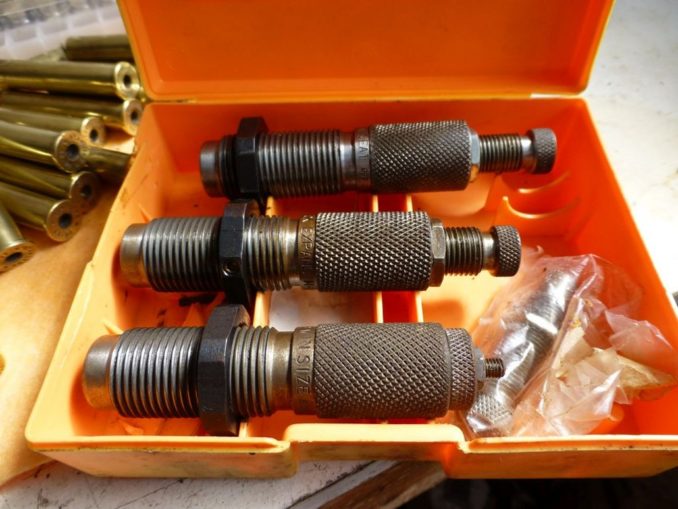
Next I clean out the primer pockets by reaming with a hand-held ‘uniforming tool’ to ensure that the new primers will seat easily and to the correct depth.
When loading cast lead or paper-patched bullets into brass cases it is important to slightly expand the necks of the cases so as to prevent lead or paper being shaved off when the bullets are finally pressed to the correct depth in the cartridges. This is achieved using the neck expansion die which has to be very carefully adjusted to give just the right amount of flare to allow the bullet to enter slightly without distorting the case to the point where it is difficult or impossible to load into the rifle.

At the same time as the case necks are being expanded, the new primers can be fitted. A primer is placed face down in the priming arm of the press and the case is raised into the die with a downward pressure on the operating lever. As the now expanded case descends from the die, the primer is installed with an upward pressure on the lever.
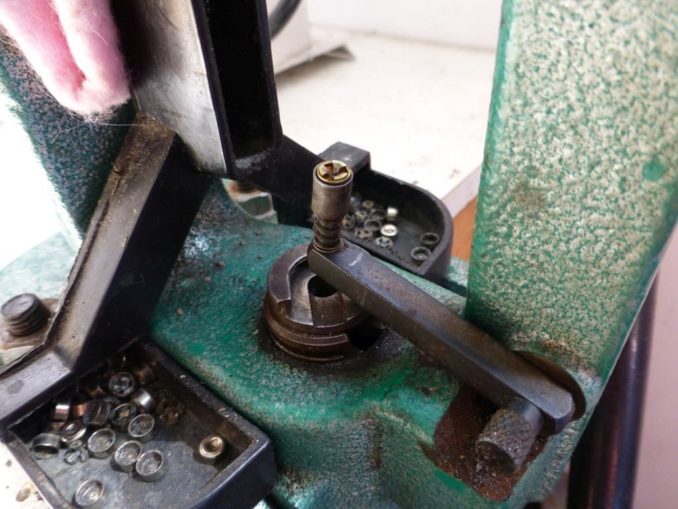
Once the case has been primed it is ready to be charged with black powder. As our range is only 50m, there is little point in fully charging the cases and by trial and error I have found that 65 grains of medium powder allows me to insert a grease ‘cookie’ between the top of the powder and the base of the bullet. This keeps the fouling in the barrel soft improving accuracy and making subsequent cleaning easier.

I put a greaseproof paper disc on top of the powder to prevent the grease cookie contaminating the powder and then insert the cookie topping that off with another greaseproof paper disc followed by a thin card disc that protects the base of the bullet when the rifle is fired.

Bullets for the .45-90
My preferred bullet is the Lyman ‘Postell’ (535 grains) which gives superb accuracy in this rifle. I cast them from a mix of 30 parts lead to 1 part tin. I also occasionally use paper-patched bullets but this further complicates the process and doesn’t give quite the same degree of accuracy as the Postell.

Although the rifle is nominally .45 inch calibre, the rifling groove diameter is .458 inch. Bullets can be fired ‘as cast’ as they will swage down into the rifling when they are fired but it is better practice to size and lubricate them in a special ‘sizer-lubricator’ press. This is fitted with a .458 inch swage and a correctly profiled nose punch so as not to damage the bullet. The body of the press is filled with the user’s choice of grease. A 50:50 mix of beeswax and Vaseline is as good as any. When the bullet is forced through the die, the driving bands are swaged to .458 inch and at the same time its grooves are filled with grease.
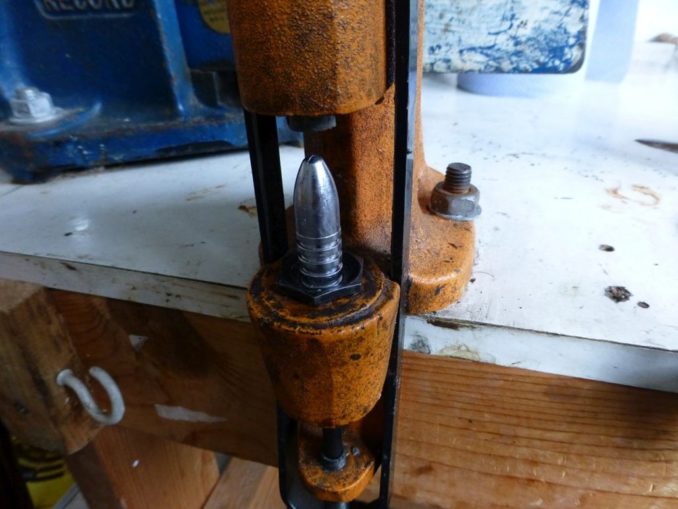
All that now remains is for the bullets to be pressed to the correct depth in the cartridge cases after which they will be ready to fire.
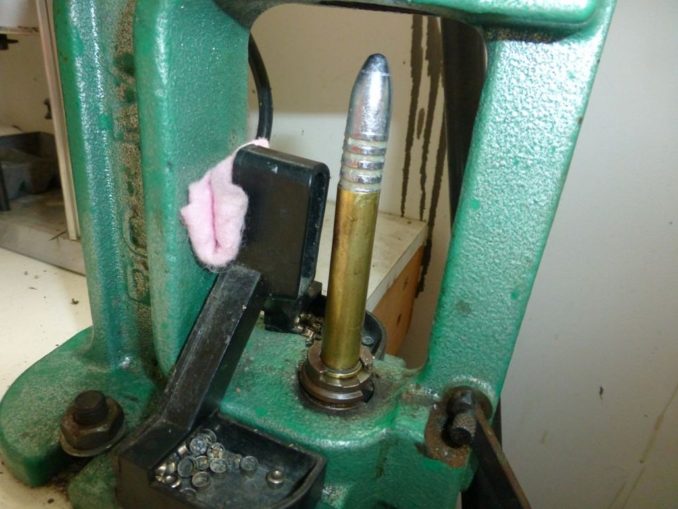
And here is the final result:
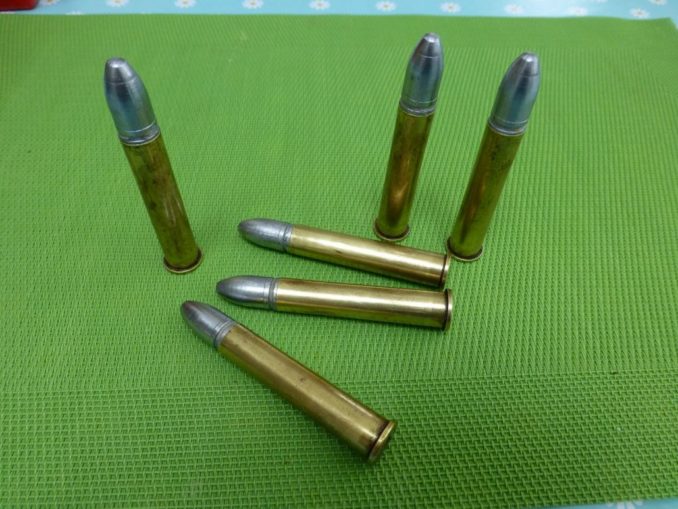
Unlike those who use factory produced ammunition, home loaders have the ability to experiment in order to obtain the best accuracy from their firearms. This can become obsessive, particularly in a discipline called ‘Bench Rest’ whose practitioners can be quite anal. With target rounds it is important to ensure that the nose of the bullet when chambered just enters the throat of the rifling so as to avoid a ‘jump’ as the bullet moves forward into the barrel. By making up dummy rounds and playing about with the bullet seating die, the optimum ‘cartridge overall length’ that engages the rifling yet still permits easy loading can easily be determined.
But is it worth all this faffing about?
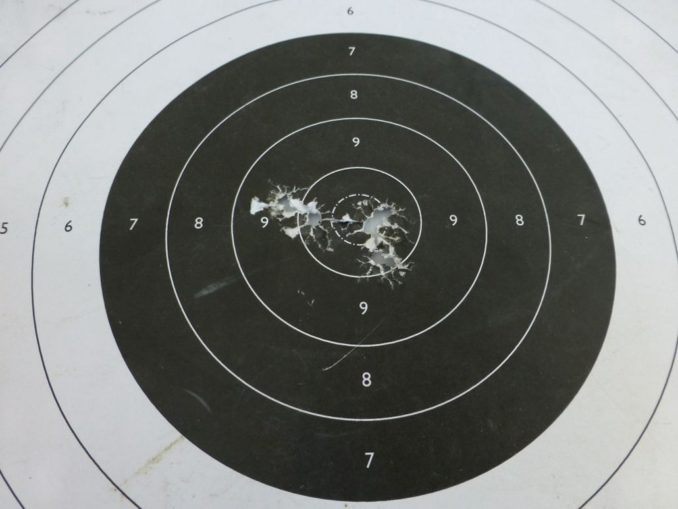
Reloading is not for everyone but anyone who wishes to shoot antique or replica rifles in as authentic a manner as possible using the only propellant that was available at the time they were in use simply has no alternative. I get a lot of personal satisfaction from using black powder despite its disadvantages but it’s not for everyone and apart from a small group of fellow black powder enthusiasts, by far the majority of shooters at my two clubs are confident that I must have a tile loose.
Each to his own.
© text & images Tom Pudding 2020
The Goodnight Vienna Audio file


